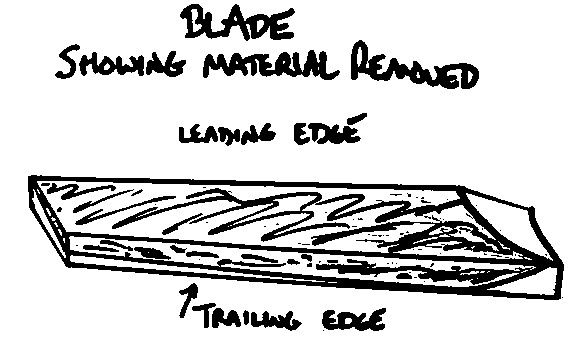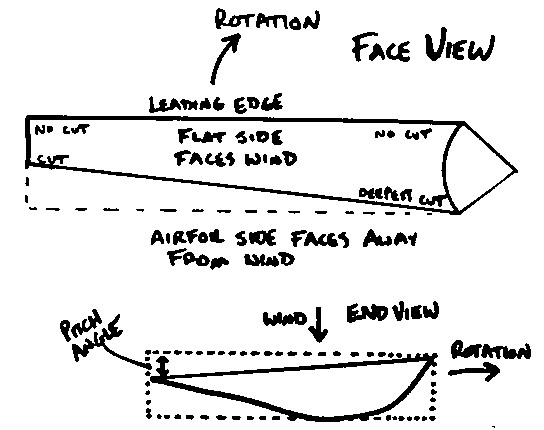
Took my usual walk a few days ago and Chase, my dog who loves to tree everything, chased this little Fisher up a tall tree. The Fisher wasn't a bit happy and barked down at us but stayed up high.



1/4 tsp active dry yeast
1 1/2 cups warm water
3 cups all-purpose flour, plus more for dusting. You may use white, whole wheat or a combination of the two.
1 1/2 tsp salt
Cornmeal or wheat bran for dusting
Yield: One 1 1/2-pound loaf.
Adapted from The New York Times.
 Enron and the subprime meltdown are wake-up calls for Americans. Our time as the world leader appears to be setting as we struggle with a materialistic and dishonest administration. Having a corporate compromised media has complicated people’s ability to make the best decisions.
Enron and the subprime meltdown are wake-up calls for Americans. Our time as the world leader appears to be setting as we struggle with a materialistic and dishonest administration. Having a corporate compromised media has complicated people’s ability to make the best decisions.
"Many Christians outside the right-wing camps have hidden their identity as Christians because of embarrassment and shame that fundamentalists and evangelicals have brought upon the Name of Christ."
Waterboarding is not “simulated drowning.” It is drowning. As Reps. Jerrold Nadler (D-NY) and William Delahunt (D-MA) explained, “The victim’s lungs fill with water until the procedure is stopped or the victim dies.” Former Navy survival instruction Malcolm Wrightson Nance explained to Congress:
In my case, the technique was so fast and professional that I didn’t know what was happening until the water entered my nose and throat. … It then pushes down into the trachea and starts the process of respiratory degradation. It is an overwhelming experience that induces horror and triggers frantic survival instincts. As the event unfolded, I was fully conscious of what was happening: I was being tortured.
Read more here ...... http://thinkprogress.org/2007/12/12/comedian-waterboarding/
 This bunch couldn't do worse than our current leader and his yes-men!
This bunch couldn't do worse than our current leader and his yes-men!

FAIRBANKS -- Interior Alaska's permafrost has warmed in some places to the
highest level since the ice age ended 10,000 years ago, its temperature now
within a degree or two of thawing.
Earth frozen since woolly mammoths and
bison wandered Interior steppes has been turning to mush. Lakes have been
shrinking. Trees are stressed. Prehistoric ice has melted underground, leaving
voids that collapse into sinkholes.
http://www.adn.com/news/environment/story/6815494p-6707211c.html
Statistics compiled by the American Automobile Association (AAA), show that fuel economy is compromised by 10 percent when tires are under inflated by only two psi (pounds per square inch.) So if you spend $80 a month for gasoline, this can cost you almost $100 a year. Now wouldn't you rather have that hundred bucks in your wallet?
Gardening is the world's best-kept exercise secret, as I found out (albeit the hard way). But that's changing. Recent medical studies have documented what backyard enthusiasts have known for years: gardening is good for us. More @ Garden.org
"Notorious for their longevity, the average life expectancy of the Japanese is 81.6 years, compared to the 77.1 years expected for Americans (and only 74.5 years for men). This puts America at par with Cuba on the human durability scale."
Legend - Introduced by Dr. James Baggett at Oregon State University, this very early variety sets large fruit that are glossy red and round with a very good flavor that is a nice blend of sugars and acids. What is also exciting about Legend is its strong resistance against the late blight fungus, a problem that has thwarted many a tomato gardener. It sets fruit well under cool temperatures, and contains few seeds. We think this combination of great taste, earliness, and strong disease resistance makes Legend truly memorable.
Floralina VFFFA Hybrid - A cooperative effort between the breeding programs at North Carolina State and University of Florida, this variety is the first available to homeowners with resistance to all 3 races of fusarium wilt. It produces beautiful, smooth 8 to 10 oz. round red tomatoes with very good flavor. Even though it was developed in the South, Floralina grows equally well in other regions.
Manufacturers do list active ingredients on packaging, but trademark laws allow them to keep secret so-called “inert” ingredients—dangerous petrochemicals and solvents such as benzene, toluene and xylene—even though they can make up 90 percent of the product. “Inert ingredients are not necessarily safe, nontoxic or even chemically inert,” says Maria Mergel of the Washington Toxics Coalition, a nonprofit organization in Seattle. “The term usually means only that these ingredients are not intended to kill fleas.”


“(I)t doesn't cost a whole lot of energy to have a light bulb turned on. A 100-watt bulb, in a home paying about 9 cents per kilowatt-hour, costs about a penny an hour to operate. But leave that bulb on needlessly for 12 hours a day and you just spent an extra $3.50 or so a month for that bulb—about $40 per year. And how many light bulbs do you have in your house right now? Count them—I'll bet your surprised at how many there are. That penny an hour for one bulb can quickly become hundreds of dollars per year for all the bulbs in your home.”
Because meat from grass-fed animals is lower in fat than meat from grain-fed animals, it is also lower in calories. (Fat has 9 calories per gram, compared with only 4 calories for protein and carbohydrates. The greater the fat content, the greater the number of calories.) As an example, a 6-ounce steak from a grass-finished steer can have 100 fewer calories than a 6-ounce steak from a grain-fed steer. If you eat a typical amount of beef (66.5 pounds a year), switching to lean grassfed beef will save you 17,733 calories a year—without requiring any willpower or change in your eating habits. If everything else in your diet remains constant, you'll lose about six pounds a year. If all Americans switched to grassfed meat, our national epidemic of obesity might diminish.
Omega-3s are most abundant in seafood and certain nuts and seeds such as flaxseeds and walnuts, but they are also found in animals raised on pasture. The reason is simple. Omega-3s are formed in the chloroplasts of green leaves and algae. Sixty percent of the fatty acids in grass are omega-3s. When cattle are taken off omega-3 rich grass and shipped to a feedlot to be fattened on omega-3 poor grain, they begin losing their store of this beneficial fat. Each day that an animal spends in the feedlot, its supply of omega-3s is diminished.[8] The graph below illustrates this steady decline.

“Glaciers are melting in the Alps at an unprecedented rate. The polar ice caps are rapidly disappearing. Worst-case scenarios from scientists predict a dramatic increase in temperatures across much of the globe. For parts of the Northern Hemisphere, however, some scientists warn that ocean-current changes could produce radical cooling. Our world, so go such arguments, is about to change radically for the worse.”
Rabies in raccoons was first described in Florida in the 1950s and spread slowly during the next three decades into Georgia, Alabama, and South Carolina. Through translocation of infected animals, raccoon rabies was unintentionally introduced in the mid-Atlantic states. In 1977, near the Virginia-West Virginia border, reports of a single, rabid raccoon in Hardy County, West Virginia, and three more rabid raccoons in the adjoining counties of Virginia in 1978 initially drew little attention. Since then, this unremarkable focus of rabies in raccoons expanded to form the most intensive rabies outbreak in the United States. More than 45,000 raccoons have died of rabies, as well as over 4,200 cats and nearly 3,000 dogs. Moreover, with the close association of raccoons and humans in suburban settings, an increased number of people have been exposed to potentially rabid animals and have needed post-exposure rabies prophylaxis. At present, an estimated 20,000-40,000 people are exposed to rabies each year in the United States. Raccoon rabies now extends throughout approximately 1 million square km along the eastern states from Florida to Maine, and is now invading the midwest at the Pennsylvania-Ohio border.
A study by Firman E. Baer of Rutger’s University compared the mineral content of organically-grown foods with non-organically grown foods. The study showed significant differences in the mineral content of these foods. Organically grown snap beans had over 22 times more iron than their commercial counterpart, while organically grown spinach provided 80 times more iron than the non-organic variety. Organically grown food has at least twice as much mineral content in many cases.If that doesn’t convince the skeptics they can send their own samples to be tested.
….a 1992 USDA report estimated the following potential health benefits if everyone in the United States could be convinced to eat a diet containing the recommended daily amounts of primary nutrients shown in the table:So while big businesses may have the money to persuade people that there is no difference in their food homesteaders know and understand the difference because they live closer to the earth and reality - not profits.
20 percent reduction in cancer
25 percent reduction in heart and vascular conditions
50 percent reduction in arthritis
20 percent reduction in respiratory and infectious diseases
50 percent reduction in infant and maternal deaths
“Super-efficient (“Net-zero”) solar homes are now available that reduce monthly energy bills 50 percent to 70 percent compared to comparable conventional homes. Today, anyone can have a zero-energy home by paying, upfront, roughly 10 percent to 20 percent more than the cost of a traditional home for renewable-energy technology, which generally has a payback in energy bill savings of about 20 to 30 years.”You might want to consider an efficient, money saving, new home like the ones mentioned above before rising energy prices get out of hand.
“Net-zero-energy means the homes are super-efficient, with much of their electricity produced by rooftop solar panels; they draw electricity from the grid at night or on cloudy days, but overall they generate at least as much energy as they consume each year.”
“Jeff Christian, director of the Oak Ridge National Laboratory’s Buildings Technology Center, has been studying energy efficiency in homes for more than 30 years, and he wants to make zero-energy homes affordable for everyone. To do so, he needs real-life data from homeowners so his team can refine and improve the homes’ engineering and cost efficiencies. To that end, he hopes to organize a mass purchase of these types of houses: “If we can get a few thousand people who will all order houses at the same time — not all with the same size and floor plan, but the same efficiency principles and materials applied to each, it would add some economies of scale and help us bring the unit cost down,” Christian says. “From a research standpoint, it would be immensely valuable to get the feedback about what works and what doesn’t work from homeowners who really care about these issues.”
If you would like to learn more, send an e-mail to Jeff Christian.